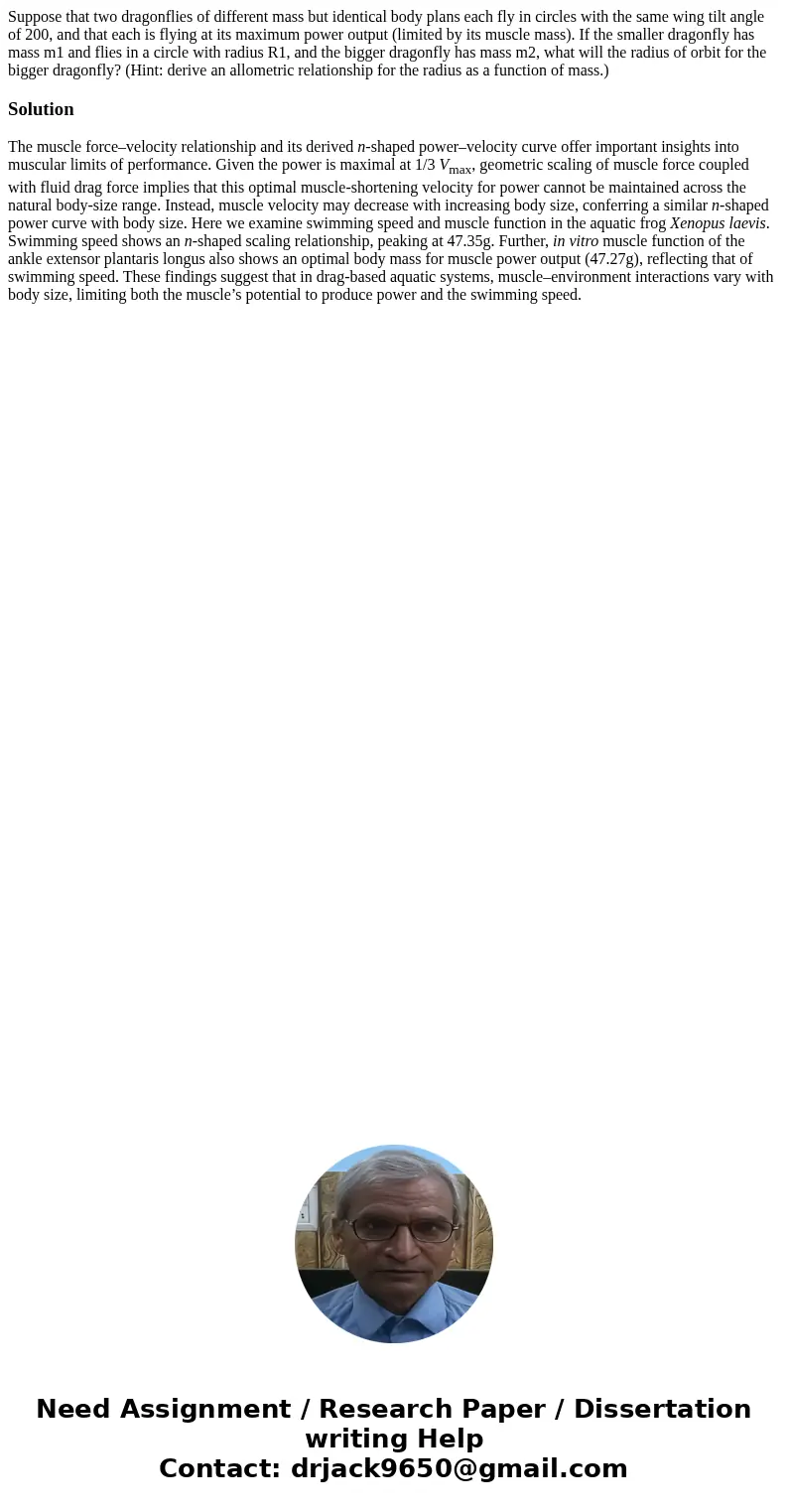Suppose that two dragonflies of different mass but identical
Solution
The muscle force–velocity relationship and its derived n-shaped power–velocity curve offer important insights into muscular limits of performance. Given the power is maximal at 1/3 Vmax, geometric scaling of muscle force coupled with fluid drag force implies that this optimal muscle-shortening velocity for power cannot be maintained across the natural body-size range. Instead, muscle velocity may decrease with increasing body size, conferring a similar n-shaped power curve with body size. Here we examine swimming speed and muscle function in the aquatic frog Xenopus laevis. Swimming speed shows an n-shaped scaling relationship, peaking at 47.35g. Further, in vitro muscle function of the ankle extensor plantaris longus also shows an optimal body mass for muscle power output (47.27g), reflecting that of swimming speed. These findings suggest that in drag-based aquatic systems, muscle–environment interactions vary with body size, limiting both the muscle’s potential to produce power and the swimming speed.

 Homework Sourse
Homework Sourse